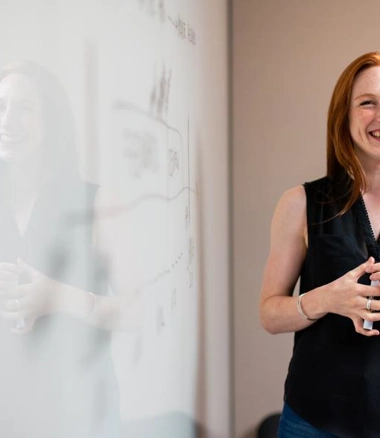
You arrive at work early, open your laptop, and begin a choreographed dance across six platforms: Revit model, clash detection, live sensor feeds, compliance tracker, team chat and energy analysis.
Someone drops a message in Teams asking if the HVAC schema matches the BMS layer, again. Every ping pulls you out of your engineering headspace. You respond, nod at updates, close notifications, and by mid-morning, you feel drained.
If you’ve worked in building services over the past five years, mechanical, electrical, fire, sustainability, this will feel familiar. You haven’t become less technical. But your job has become less technical. That shift is happening fast, and few people are talking about the cost.
It’s time to ask: is technology serving you, or redefining your role into something less meaningful?
Digitalisation Was Supposed to Make Work Better
The promise was clear: faster collaboration, smarter buildings, leaner systems. And yes, the tools have improved. BIM integration, generative design, real-time monitoring, they’re not fads.
But they come at a cost: attention fragmentation, loss of autonomy, and a subtle erosion of what it means to be a systems engineer.
According to the NSW Digital Buildings Roadmap (2024), building firms are now using an average of 6.2 different digital systems across typical commercial projects, up from 5.3 the year prior (NSW Gov). Yet only 53% of firms reported feeling digitally competent.
So, the tools are in place. But the workforce isn’t always ready or supported.
When You Become a System Integrator by Default
You probably didn’t ask to become the de facto BIM coordinator, data validator, or digital QA lead. But here you are.
In a recent conversation, a mid-level mechanical engineer in Sydney shared this:
“We were told BIM would simplify the job. But now I’m spending half my week troubleshooting PDFs, version mismatches, and trying to explain the difference between a setpoint and a sensor error to people outside services.”
He’s not alone. The systems have improved. But the systems thinking, the part that defines your actual value, is getting buried in tools that demand your time but not your judgment.
This isn't a rejection of technology. It's a call for clarity. Because right now, you’re being asked to own performance without ownership.
What the Data Is Starting to Show
The pressure is mounting. Not in obvious ways, like deadlines or overtime, but in less visible ones: cognitive load, fractured workflows, and professional drift.
Here’s what the numbers tell us:
- 41% of engineering professionals in Australia’s built environment have considered changing industries due to digital stress and unclear project roles (ACIF 2024).
- In the KPMG Global Construction Survey (2024), 61% of Australian respondents said digital transformation was increasing staff turnover, not reducing it.
- A 2024 Engineers Australia pulse report noted that mid-career engineers in building services cited “loss of role clarity” as a top cause of dissatisfaction, above pay or workload.
Digitalisation isn’t just transforming workflows. It’s reshaping your professional identity.
The Truth No One Wants to Say Aloud
Digital rollout has outpaced role design.
Many firms rushed to adopt new tools, but never redefined job descriptions, career pathways, or team structures to match. The result? Hybrid roles that lack clarity, blurred lines between design, data and delivery, and mid-level professionals absorbing responsibility without recognition.
The truth: we’ve outsourced authority to software without updating how we support the people who use it.
It's Not Just Burnout. It's Role Dislocation
Most conversations in the industry frame this as burnout. But that’s not what this is.
This is something deeper: role dislocation.
You feel like an engineer, but work like a digital coordinator.
You want to own system outcomes, but you’re measured on model coordination.
You joined to build performance. Now you manage dashboards.
This quiet contradiction is eroding confidence, satisfaction, and career momentum, especially for those in mid-career who remember what the job used to feel like.
So, What Can You Do About It?
You're not going to stop the digital shift. But you don’t have to be quietly absorbed by it, either.
Here are a few ways to push back constructively, and reclaim clarity in what you do.
1. Redefine Your Value in Project Conversations
Don’t talk about tools. Talk about system performance.
Instead of “I managed the BIM inputs for HVAC”, say:
“I ensured system design met operational performance, compliance, and energy targets—validated through BIM and BMS platforms.”
Shift the language. Reposition the work.
2. Ask Better Questions in Early Design Stages
Start every new project by asking:
- Who owns the final system performance?
- What will success look like after handover?
- What digital tools are being used, and why?
These questions reclaim your influence, not by rejecting digital platforms, but by asserting leadership within them.
3. Propose Defined Hybrid Roles, Not Blended Ones
It’s time to stop pretending that every engineer can also be a software lead.
If you find yourself absorbed by coordination and data integrity work, raise it. Suggest splitting responsibilities, so engineering integrity doesn’t get diluted by digital admin.
This doesn’t just protect your time. It protects outcomes.
4. Speak Plainly About What’s Not Working
Don’t frame your discomfort as resistance. Frame it as risk.
If a process or tool is pulling you away from system thinking, say so, backed by outcomes, not emotion.
In a recent sustainability-led hospital project, a senior ESD engineer shared that his entire design process was reshaped to meet platform inputs, not clinical outcomes. That’s not innovation. That’s misalignment.
Tech Can’t Replace What You Know
This is not a call to return to pen-and-paper design. You know that’s not realistic. But it is a reminder that your career was built on systems, judgement, foresight and not notifications.
The more noise these tools introduce, the more valuable it becomes to be the person who sees the whole picture.
You don’t need to fight the digital future. You just need to stay visible inside it.
Because systems don’t run on dashboards. They run on decisions.
And you’re still the one best placed to make them.





